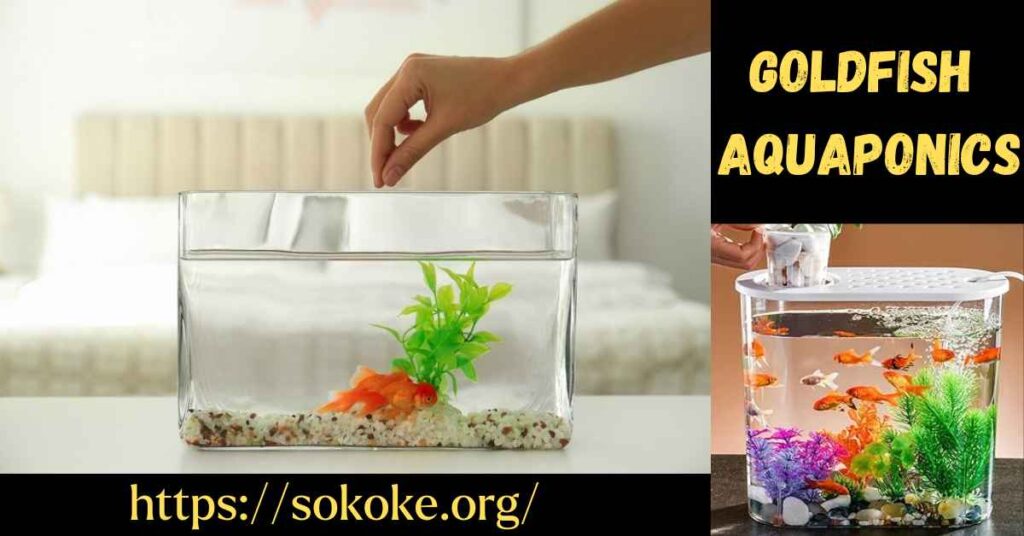
Introduction to Goldfish Aquaponics
Welcome to the fascinating world of Goldfish Aquaponics, where underwater ecosystems and sustainable gardening collide! If you want to add a splash of life and greenery to your living space, diving into Goldfish Aquaponics might be the perfect fit. Learn how these charming aquatic pets can help you grow thriving plants in a harmonious symbiotic relationship. So, buckle up and prepare to embark on an exciting journey into the realm of Goldfish Aquaponics!
How Does Goldfish Aquaponics Work?
Goldfish aquaponics works by creating a symbiotic relationship between the fish and plants. The process begins with the goldfish producing waste in the water containing ammonia. Bacteria then convert this toxic ammonia into nitrites and nitrates that serve as plant nutrients.
The nutrient-rich water is circulated to the plant beds, fertilizing their roots. In return, the plants filter out impurities from the water, creating a healthier environment for the goldfish to thrive in. This closed-loop system mimics natural ecosystems, promoting sustainable growth for both aquatic life and vegetation.
By harnessing nature’s principles, goldfish aquaponics offers an efficient way to cultivate fresh produce while maintaining a balanced aquatic ecosystem. It’s a fascinating blend of aquaculture and hydroponics that showcases how interconnected systems can benefit each other harmoniously.
Setting Up Your Goldfish Aquaponics System
Setting up your goldfish aquaponics system is an exciting step towards creating a sustainable ecosystem in your own home. Select a suitable tank or container for your goldfish and plants to thrive. Ensure the tank is large enough to accommodate both elements comfortably.
Next, install a reliable filtration system to keep the water clean and healthy for your goldfish. Consider adding beneficial bacteria to establish a balanced environment for optimal plant growth. Position the system in a well-lit area but avoid direct sunlight, which could cause algae bloom issues.
Introduce your goldfish into their new habitat gradually, allowing them time to acclimate to the water conditions. Monitor the temperature regularly and adjust for your aquatic friends’ well-being.
Remember, patience is critical when setting up your goldfish aquaponics system. With proper care and maintenance, you’ll soon enjoy watching your plants flourish, and your goldfish thrive in this harmonious ecosystem within your home.
Choosing the Right Goldfish for Your System
When choosing the suitable goldfish for your aquaponics system, there are a few key factors to consider. First and foremost, you’ll want to select a species of goldfish that can thrive in an aquaponic environment. Common and comet goldfish are popular due to their hardy nature and adaptability.
It’s essential to consider the size of your tank or pond when selecting goldfish. Smaller varieties like the standard or comet goldfish are well-suited for smaller setups, while larger breeds such as the Shubunkin or Sarasa Comet may require more space to swim and grow comfortably.
Additionally, the temperature requirements of different goldfish types must be considered. Some varieties prefer cooler water temperatures, while others can tolerate warmer conditions. Make sure to choose fish that align with the climate and conditions of your aquaponics setup.
Consider the aesthetic appeal of different goldfish breeds. From vibrant orange hues to striking calico patterns, a wide range of colors and markings can add beauty and diversity to your aquaponics system.
Best Practices for Maintaining a Healthy Goldfish Aquaponics System
Keeping a healthy goldfish aquaponics system requires attention to detail and consistency. One of the best practices is to monitor water quality regularly, ensuring proper pH levels, ammonia, nitrites, and nitrates. These parameters directly impact the health of your goldfish and plant growth.
Maintaining a balanced ecosystem is crucial; don’t overstock your tank or overfeed your fish. Regularly clean the grow bed and filter media to prevent any buildup that can harm your plants or affect water quality.
Provide adequate light for your fish and plants by placing them in a well-lit area without direct sunlight. Additionally, ensure proper aeration for the roots of your plants through efficient water circulation.
Regularly check for signs of stress or illness in your goldfish, such as behavior or physical appearance changes. Address any issues promptly by consulting with an aquatic veterinarian if needed.
By consistently following these best practices, you can create an optimal environment for your goldfish and plants to thrive harmoniously in your aquaponics system.
Troubleshooting Common Issues in Goldfish Aquaponics
Do you need help with your goldfish aquaponics system? Don’t worry; it happens to the best of us. One common issue you might encounter is cloudy water. This could be due to overfeeding or a high ammonia level. To fix this, try reducing feeding and adding more plants to help filter the water.
Another common problem is algae growth. Algae thrive in sunlight and excess nutrients in the water. You can solve this issue by reducing light exposure and adjusting your feeding routine.
Check the water parameters like pH levels and temperature if your goldfish seem stressed or show signs of illness. Sudden changes can impact their health significantly.
Remember, regular maintenance is critical to preventing these issues from occurring in the first place. Keep an eye on your fish, monitor water quality regularly, and make adjustments as needed to ensure a healthy environment for your aquatic friends.
Benefits of Goldfish Aquaponics for the Environment and Savings on Water Usage
Goldfish aquaponics offers a sustainable way to grow plants while keeping our environment in mind. Utilizing the waste produced by goldfish as nutrients for plants creates a closed-loop ecosystem that minimizes water consumption. The symbiotic relationship between the fish and plants helps maintain water quality, reducing the need for frequent water changes.
This eco-friendly approach conserves water and reduces reliance on chemical fertilizers typically used in traditional gardening methods. As a result, goldfish aquaponics promotes organic growing practices and contributes to a healthier ecosystem overall. Additionally, this method can be implemented on various scales, from small home setups to more extensive commercial operations, making it accessible to all growers.
Incorporating goldfish into aquaponics systems benefits the environment and provides cost savings on water usage and fertilizer expenses. This innovative technique demonstrates how sustainability and efficiency can go hand in hand when cultivating plants while caring for aquatic life simultaneously.
Tips and Tricks for Maximizing Your Gold
When maximizing your goldfish aquaponics system, a few tips and tricks can help you get the most out of your setup.
Make sure to check the water quality in your tank regularly. Clean water is essential for the health of your goldfish and plants.
Additionally, consider adding beneficial bacteria supplements to promote a healthy ecosystem within your aquaponics system. These bacteria help break down fish waste into nutrients your plants can absorb.
Another tip is to vary the diet of your goldfish. A diverse range of foods will ensure they receive all the necessary nutrients for optimal growth and health.
Remember to monitor the temperature and lighting conditions of your aquaponics setup. Goldfish thrive in stable environments, so maintaining consistent conditions is critical to their well-being.
Conclusion
Reflecting on the knowledge gained and the possibilities ahead is essential as you reach the end of this journey into the world of Goldfish Aquaponics. From understanding how these systems work to choosing the suitable goldfish and maintaining a healthy environment, there is much to explore.
By delving into best practices and troubleshooting common issues, you are better equipped to ensure your system thrives. The environmental benefits and water savings are significant when implementing Goldfish Aquaponics.
Remember, maximizing your goldfish aquaponics system requires dedication and care. Continuously seek new tips and tricks to improve its efficiency and effectiveness. As you continue on this aquaponic journey, embrace each challenge as an opportunity for growth and learning.
Stay curious, stay enthusiastic, and keep exploring the fascinating world of Goldfish Aquaponics!
FAQs
Can I use any goldfish for aquaponics?

A: While most goldfish can thrive in an aquaponics system, choosing hardy ones that can tolerate varying water conditions is essential.
How often should I feed my goldfish in an aquaponics system?
A: Feed your goldfish small amounts 2-3 times a day. Be cautious not to overfeed, as it could lead to water quality issues.
: Do I need special equipment for a goldfish aquaponics system?
A: Basic equipment like a tank, grow bed, pump, and filtration system is necessary for setting up a successful goldfish aquaponics system.
Incorporating Goldfish Aquaponics into your life adds beauty and promotes sustainable living. By following the tips, tricks, and best practices shared here, you’ll be on your way to creating a thriving ecosystem that benefits both your plants and fish. Embrace this innovative method of gardening today!
